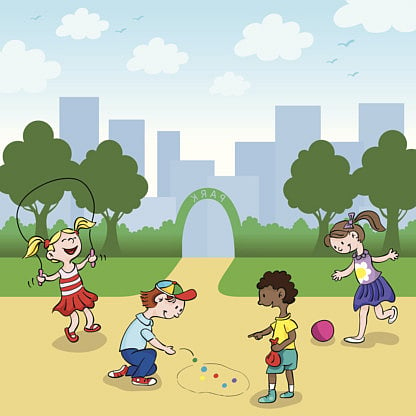Playtime as a fitness plan
When adults find structured exercise programmes boring after a while, can you blame children for begging off fitness plans? The key word is fun

Studies have found that teenagers got up to 50% stronger after merely three months of adopting a more active lifestyle. They also acquire greater bone density and are able to avoid injuries, besides developing endurance and flexibility. According to the US Centers for Disease Control and Prevention, a child needs an hour’s worth of aerobic activity every day. Plan your child’s fitness regimen keeping his or her age and attention span in mind, which would require you to mix up his or her activities to prevent their interest from flagging.
Here are a few things that you as a parent need to remember to ensure that your child starts with, and sustains, a healthy and active lifestyle.
Staying active:
In the ‘good old days’ it was easy – you just sent your kids out to play. But now a lot more planning may be required. Activities that get a child’s heart rate up is easily achieved by children with the running around they do in the backyard or on the trampoline. Enrolling your children in extracurricular programs like swimming, gymnastics, football, tennis and dancing classes is another great way to ensure your children get their quota of physical activity.
Unstructured Play:
It is vital to remember that achieving a healthy and active lifestyle is not just about organised programmes. Any activity that presents the child with an aerobic workout is great. Be it biking or horsing around with friends or tossing the Frisbee with your family or a simple running-and-catching game or throwing the ball around, the end result is the same – better health. This kind of unstructured play time is essential for a child’s physical, mental and emotional well-being as it will also teach a child how to interact with peers.
Role of the parent
It is important for parents to set a good example by getting active themselves. Here are a few points that will make it easier for you to get your children more active.
Sport activities: There are many after-school programmes that encourage fitness and help children socialize with other kids. Think tennis, karate, gymnastics, volleyball and football. Enroll your child in one of these programs and watch them earn additional certificates and achieve better fitness.
Fun: No one likes chores, least of all children. This is why it is essential that kids look upon getting fit as a fun thing to do as opposed to another hateful chore. Encourage them to participate in activities like dancing, swimming, roller blading and cycling.
Holidays: We all want to let go completely and relax during our holidays but try and include some fun, physical activities in your vacation. Go hiking, kayaking or scuba diving instead of just scheduling spa treatments, shopping trips and dinners.
Choice: Let your child have some say in selecting the physical activities they want to follow. Then there is a better chance of them sticking to it.
You are what you eat
Make dietary and lifestyle choices every step of the way that will aid you and your family in achieving and maintaining better health.
• Make sure your child has 3 scheduled meals and 2 scheduled healthy snacks. Discourage grazing on whatever they can lay their hands on in between.
• Don’t stock up on unhealthy snacks at home, because it is easier to eat healthy when there are no unhealthy temptations lying around.
• There was a time when children did not have access to all the goodies that they do today and therefore it made sense to have full cream milk. This is no longer the case and if the child is over 2 years of age, low fat or skim milk makes for a better choice.
• Avoid sugared beverages like sodas, Kool-Aid, bottled juice and sports drinks on a daily basis. Encourage your children to opt for water.
• Limit fast food treats to once a week or fortnight.
• Limit portion size according to your child’s age and growth. This way you ensure that your child has a healthy meal and simultaneously avoid wastage.
Sign up for the Daily Briefing
Get the latest news and updates straight to your inbox
Network Links
GN StoreDownload our app
© Al Nisr Publishing LLC 2025. All rights reserved.